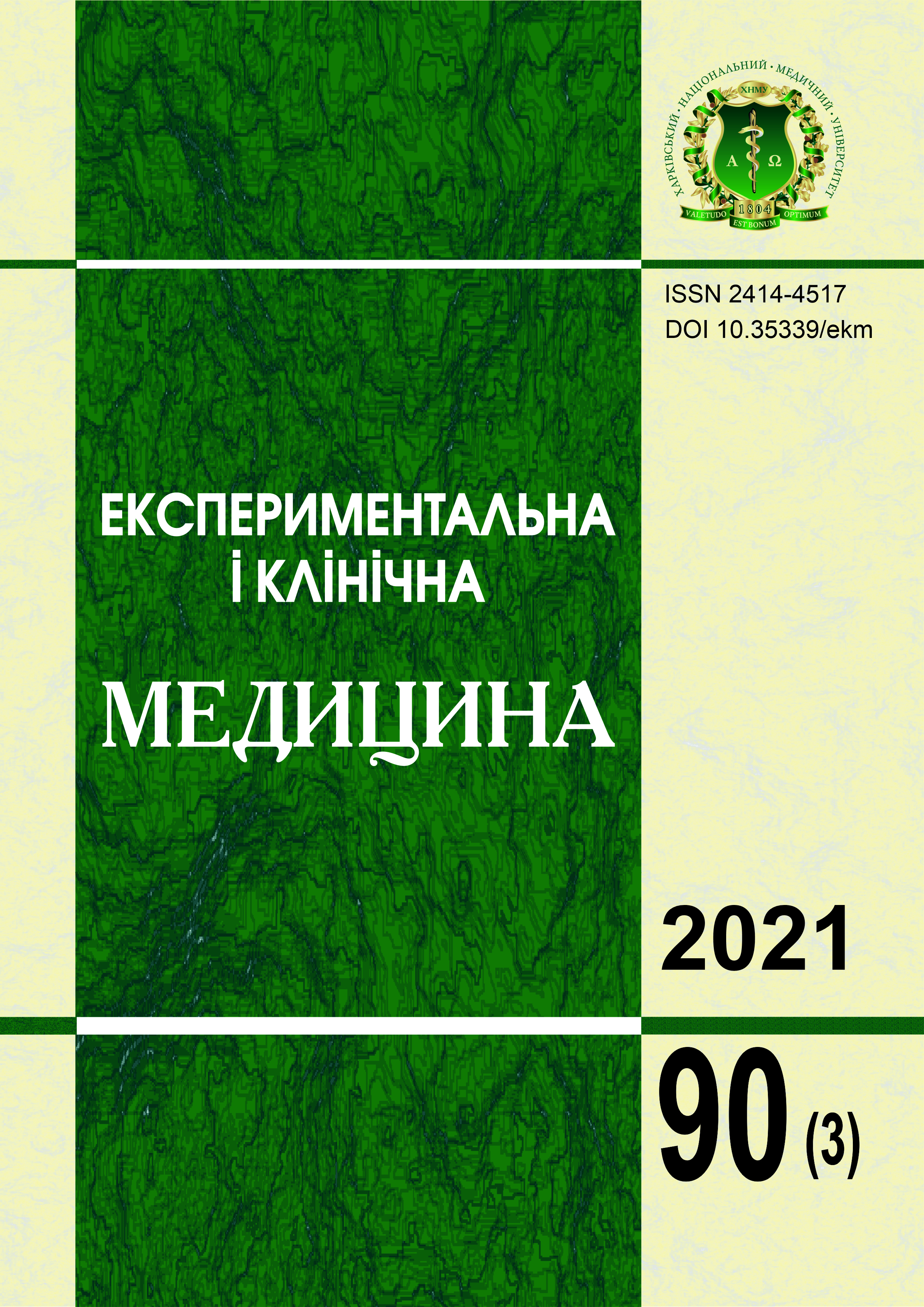Abstract
In the modern world, anxiety is an important part of life. Physiological anxiety is a normal emotional response to stress, a biological response to a threat. Anxiety allows you to protect yourself and your loved ones from harm and prepare for significant events, and also serves as an important signal to take strong action in a stressful situation. The study and understanding of the specifics of the clinical structure, diagnosis, treatment and prevention of stress-related disorders in persons who have suffered as a result of hostilities is indeed the main concern for social and medical issues of our society. As the results of the study showed, patients most often complain of the following symptoms: the affect of longing (boredom, despondency, sadness, sorrow), depressed mood, a feeling of tension, danger and tightness, difficulties in adapting to new surroundings, anxiety over small things, irritability and impatience, lack of hope and prospects, internal tension with the inability to relax, a sense of loss of control over one's life, obsessive fears, sleep disorders, psycho-traumatic memories, fears and fixation on subjectively significant negative information about events in the occupied territories. In the clinical structure of post-traumatic stress disorders in the examined patients, it was found: post-traumatic stress disorder (F43.1), adjustment disorders (prolonged anxiety-depressive reaction) (F43.21), anxiety disorders: generalized anxiety disorder (F41.1) and panic disorder (F41.0). The data obtained became the basis for the development of a comprehensive personalized program for the correction of anxiety disorders and rehabilitation of persons with forced displacement. The personalized program was with differentiated use of methods of psychopharmacotherapy, psychotherapy and psychoeducation.
Keywords: biosugestive therapy, anxiety, depression, correction programs.
References
Maruta NО, Kalenska HYu, Fedchenko VYu. Psychological risk factors for mental disorders development in internally displaced persons. Lviv clinical bulletin. 2020;1(29):21-8. DOI: 10.25040/lkv2020.01.021. [In Ukrainian].
Verbitsky EJ, Evtushenko JО. Clinical, psychopathological and pathopsychological feature of reactive depression in the structure of non-psychotic mental stress-associated disorders in internally displaced persons from the Area Antiterrorist Operations in Lugansk region. Archives of psychiatry. 2016;22(2(85)):16-9. Available at: http://nbuv.gov.ua/UJRN/apsuh_2016_22_2_5 [In Ukrainian].
Lennard J. Global Overview 2015. People Internally Displaced by Conflict and Violence. Geneva: Internal Displacement Monitoring Centre, Norwegian Refugee Council. Available at: http://www.internal-displacement.org/sites/default/files/inline-files/20150506-global-overview-2015-en.pdf
Glagolych SY. Clinical and social features of maladaptive states among volunteers, whose work is related to the support of military men in ATO zone. Psychiatry, neurology, medical psychology. 2016;3(2(6)):69-76. Available at: https://periodicals.karazin.ua/pnmp/article/view/8331/7842 [In Ukrainian].
Druz OV, Syropyatov OG, Badyuk MI. Methodological recommendations for improving the treatment and rehabilitation of servicemen of the Armed Forces of Ukraine, who are involved in international operations to support peace and security, with post-traumatic stress disorder: methodological recommendations. Kyiv: MP Lesya; 2014. 54 p. [In Ukrainian].
Yuryeva LM, Shusterman TY, Likholetov EO. Non-psychotic psychiatric disorders in persons who have experienced psychosocial stress in terms of military conflict. Medicni perspektivi [Medical perspectives]. 2019;24(4):112-20. DOI: 10.26641/2307-0404.2019.4.189601. [In Ukrainian].
Markova MV, Kozyra PV. Post-stress maladaptive states against the background of social changes: analysis of the problem. Medical psychology. 2015;1(37):8-13. Available at: http://www.mps.kh.ua/archive/2015/1/2 [In Ukrainian].
Omelyanovych VYu. Social and family aspects of the diagnosis of "post-traumatic stress disorder" in military personnel after returning from the combat zone. Psychosomatics: Science and Practice. 2019;4(2):34-9. Available at: http://nbuv.gov.ua/UJRN/psmgp_2019_4_1_6 [In Ukrainian].
Druz OV, Grynevich YuG, Chernenko IO. Complex of methods, procedures and algorithm of psychotherapy in the structure of differentiated programs of psychosocial rehabilitation of states of maladaptation in participants of local hostilities. European multi science journal. 2018;22:5-11. [In Ukrainian].

